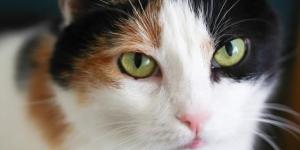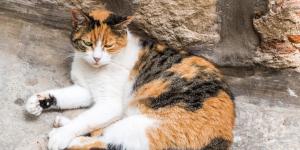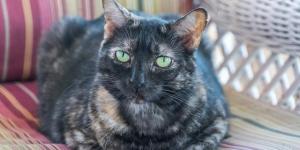Calico Cat Personality and Types


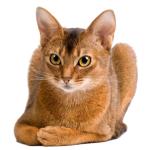
See files for Cats
Many of us speak about calico cats as if they were their own breed. All calicos share distinct characteristics, both physically and genetically, but they are not a specific breed. The calico is a tricolor coat pattern which belongs to various breeds of cat. Of the estimated 600+ million domestic cats in the world, the majority are solid or bicolor. Calico cats are tricolor since they have three coat colors. In addition to their beauty, they are a relative rarity among domestic felines. While all cats are special in their own way, some claim that calico cats have a uniqueness in terms of how they behave. This leads us to wonder what personality type calico cats have.
AnimalWised learns more by looking at calico cat personality and types. In addition to looking at the physical characteristics of shorthair and longhair calico cats, we look at the stereotypical calico cat personality and whether this can be backed up by science. This includes asking do calico cats have an attitude?
What are calico cats?
Contrary to popular belief, calico cats are not a specific breed of cat. This name refers to a very special coat pattern. While they are relatively common, it is a coat pattern which is considered a genetic rarity. The calico pattern exhibits a combination of white fur with black and orange patches. Between 25 and 80% of their body is white, with black and orange distributed randomly. It is estimated that 16 domestic cat breeds can develop the tricolor pattern typical of calico cats.
The chromosome associated with black and orange fur is on the X chromosome. Female cats have an XX chromosome nomenclature, providing one of each other. This means a calico is significantly more likely to be female than male since males need an extra chromosome to have three colors. In fact, the probability of a male cat being tricolored is 1 in 3,000. For this same reason, orange tabby cats are predominantly male.
Male calico cats are not only rare, but their genetic inheritance causes significant health problems. Since a male cat needs an extra chromosome to have both black and orange patches, he will have an XXY chromosome nomenclature. This leads to a condition known as Klinefelter syndrome, which causes cognitive impairment, metabolic disorders (diabetes and dyslipidemia), more fragile bones, a greater tendency to accumulate fat and increased prevalence of cardiomyopathy. They will also be sterile.
Discover more about the genetics of calico cats with our article on whether there are male calico cats.
Types of calico cats
Since calicos are not an actual breed, there are many types of cat which can display the calico coat pattern. Due to genetic trends, certain distinct calico patterns have developed. This has led to the following recognized calico coat types or variants:
- Traditional calico: the cat has a mostly white body with well-formed, random markings in bright black and orange tones.
- Caliby: results from the combination of the calico tricolor pattern and the tabby pattern.
- Calimanco or dilute calico: in this case, the dark spots are blue rather than black. The light tones tend towards cream rather than orange.
The curious name calico comes from an Indian cotton fabric which originated in the Keralan city of Calicut (present day Kozhikode). As you may have guessed, its color is very striking and mixes three bright tones that make it very precious.
Physical characteristics of calico cats
In addition to the tricolor pattern (white, black and orange) with random spots, calico cats share other physical features. It is possible to have longhaired calico cats, something which can be seen in certain longhaired cat breeds. However, it is more common for calicos to be shorthair cats. The texture of the hair is usually very soft and shiny. Calico eye color can be blue, green, copper or even heterochromic (eyes of two different colors).
Based on DNA analysis, it is known that cats with the calico coat pattern existed in Ancient Egypt as early as the 19th century. They reached the Old World and eventually the Americas through trade.
If you are wondering how long a calico cat lives, you should know that there are no major differences compared to other cats. As with all cats, a calico cat's life expectancy depends on their specific genetics, experiences and living conditions. If a calico is vaccinated, dewormed, well fed and properly stimulated, they can reach 15-18 years of life. As we have explained, in the case of male calico cats this is not the case.
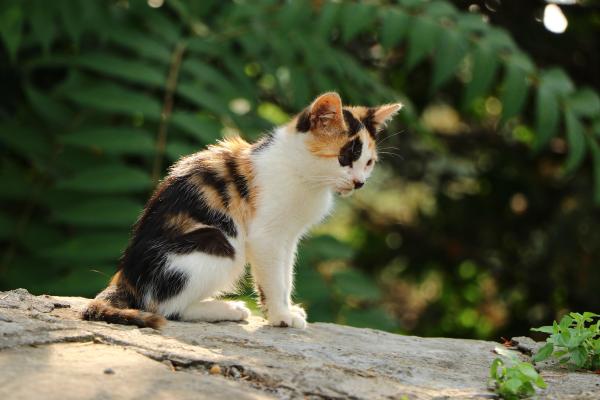
Difference between calico and tortoiseshell cat
For similar genetic reasons to calicos, 99.9% of tortoiseshell cats are female. They owe their name to the distinct tricolor coat pattern which resembles that of a turtle shell. Male tortoiseshell cats are sterile and also suffer from Klinefelter's syndrome. Both calico and tortoiseshell coats are tricolor coat patterns, but there are several nuances that differentiate them and that deserve your attention:
- Color: black predominates in tortoiseshell cats rather than white. Their patches alternate between light and reddish spots. The white is replaced by less pure light tones, such as cream or beige.
- Pattern: patches are intermingled and do not have well-defined edges and contours like calicos. It is characteristic to have a spot on the face which looks like a flame, usually on the forehead.
- Length: longhaired tortoiseshell cats are more common, as are semi-long torties.
- Eyes: their eyes are usually a copper or dark orange hue.
Like calico cats, many feline breeds have cats with this tricolor pattern. Notable among them are:
- Maine Coon
- British Shorthair
- Persian
- Cornish Rex
Both tortoiseshell and calico cats can also be mixed-breeds. In fact, the majority are mixed breed rather than purebred. Learn more about the torty with our article asking what breed are tortoiseshell cats?

What is the calico cat personality?
There are some myths and misunderstandings regarding the personality of a calico cat. Many guardians anecdotally claim that calico cats have a specific personality type which is shared with other calicos. The stereotypical calico cat personality is:
- Intelligent
- Affectionate
- Playful
- Caring
Scientific studies have also been carried out to try to determine calico personality. A study published in 2016 claimed that owners believed tortoiseshell and calicos cats to be more aggressive that other felines[1]. However, it is important to know that these data are based on anecdotal evidence and interpretations by cat owners. This means the findings are not without bias.
While it is possible some genetic influence can result in the shaping of a calico, their coat color is only one small part of this. Different breeds can be calico and they have their own personality stereotypes. Moreover, experience, socialization and other factors are more likely to influence your cat's personality. In this way, we can say each calico cat is unique and will have their own temperament and character.
Learn more about whether a cat's coat influences their personality with our related guide.

Calico cat breeds
Of the 16 cat breeds that can develop the calico tricolor pattern, the following stand out as the most common:
- Japanese Bobtail: the calico pattern is one of the most representative of the breed and is even accepted in its breed standard.
- American Shorthair: with its characteristic tabby coat, the American Shorthair is often seen in shades of gray. However, some specimens are also born with the calico pattern.
- British Shorthair: although the first color that comes to mind is blue-grey, the British Shorthair can also be born with the calico pattern and even the tortoiseshell. In this breed, both patterns do not show such vibrant shades as in other breeds, so its coat appears in rather pastel tones.
- Exotic Shorthair: characterized by its brachycephalic condition, the Exotic Shorthair may also feature the calico pattern on its coat. Their brachycephalic nature means they are a type of flat-faced cat breed.
- European Shorthair: all patterns and colors are accepted in European Shorthairs, with calico being one of the most common and striking.
- Persian: although it has been mentioned that calico cats usually have short hair, there are exceptions and the Persian breed is one of the longhaired calico breeds. Learn more about the different types of Persian cats.
Remember that mixed breeds can also be born with the genetic mutation that gives them the calico pattern. If you are looking to adopt a calico cat, the best thing you can do is go to your nearest animal rescue center. How much a calico cat costs if you purchase one will depend largely on the breed, so there is no fixed price.
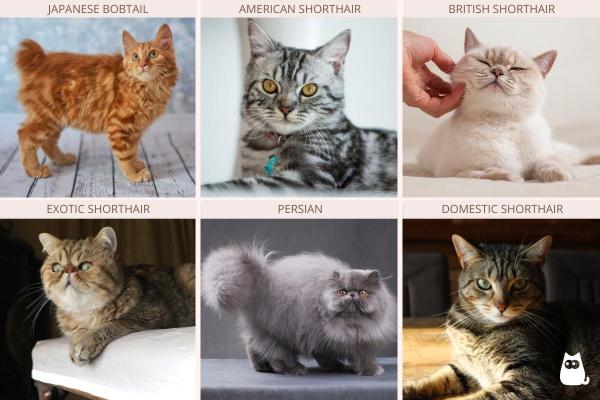
Legend of the calico cat
The unique appearance of the calico cat has led to various communities around the world to create mythologies around this feline. Cultural differences shape the legend, with some claiming they are a good omen and others claiming the opposite. Some have even imparted spiritual meanings, with one of the most deep-rooted legends of calico cats originating in a Buddhist monastery in Tibet.
In the 12th century, Buddhist monks were embroiled in heated debates over their theological differences and began a fast. During the fast, a calico cat and her three calico kittens stationed themselves at the monastery gate.
The monks adopted them. As the days went by, they realized that the presence of the kittens had helped them calm down and welcome each other's ideas. They concluded that it was a divine message. Black and white represented yin and yang, while orange alluded to the earth.
From this, they understood that on earth, human beings can understand each other and accept differences without anger. The fact they were female represented them as creators of life, reinforcing that change is always possible. Centuries later, Japanese sailors welcomed only calico cats on their ships, considering them an unequivocal symbol of good luck. In fact, their Maneki-neko or lucky cat figurines are usually calico in their design.
One of the most renowned Japanese painters is Utagawa Kuniyoshi, who immortalized his fondness for these beautiful cats in several of his most famous works in the 19th century. There is no doubt that, both for their unique beauty and their special genetics, calico cats invite us to love and admire felines even more.
Learn more about other cat coat patterns with our article asking is there a tabby cat breed?
If you want to read similar articles to Calico Cat Personality and Types, we recommend you visit our Facts about the animal kingdom category.
1. Stelow, E. A., Bain, M. J., & Kass, P. H. (2016). The Relationship Between Coat Color and Aggressive Behaviors in the Domestic Cat. Journal of applied animal welfare science: JAAWS, 19(1), 1–15.
https://doi.org/10.1080/10888705.2015.1081820

